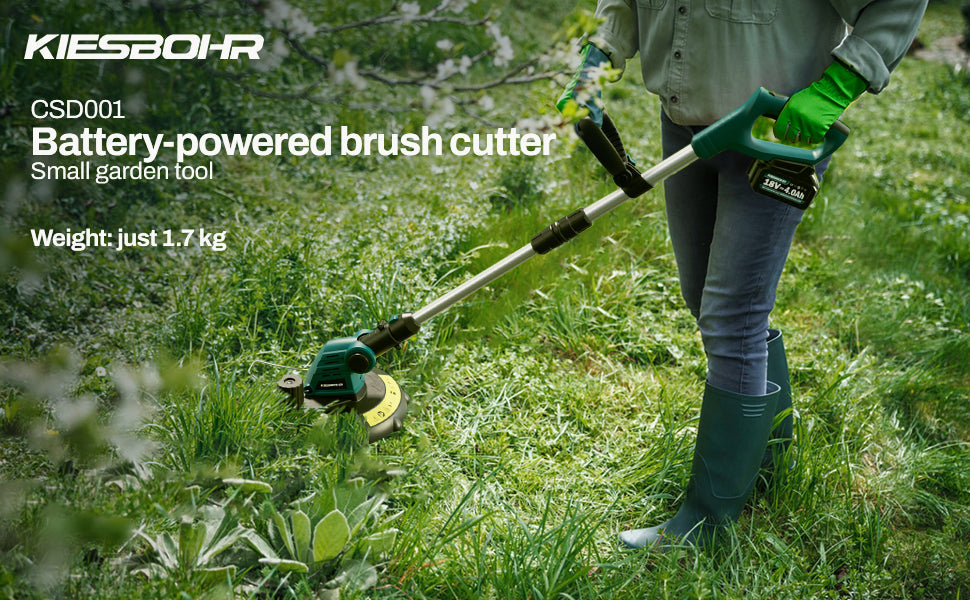
A Century of Innovation Driving the Future: Makita’s Global Leadership in Power Tools and Its Ecosystem Partners
Since its founding in 1915 by Mosaburo Makita in Nagoya, Japan, Makita Electric Works has grown from a local manufacturer into one of the world’s leading professional power tool brands. Through continuous technological breakthroughs and a deep understanding of user needs, Makita has not only set industry standards but also built a powerful battery ecosystem that empowers partner brands such as Kiesbohr to deliver high-quality, compatible, and versatile cordless solutions to global users.
A Century of Heritage and Continuous Evolution
Key Milestones and Innovations:
1969: Launched the 6500D, the world’s first rechargeable drill, pioneering cordless work.
1978: Introduced the 6010D, the first Ni-Cd battery impact drill.
1981: Released the AN5000, entering the pneumatic tool market.
1991: Officially renamed as Makita Corporation.
2005: Introduced the first lithium-ion impact driver, ushering the cordless tool industry into the lithium era.
Today, Makita offers an extensive product lineup: more than 210 tools on the 40V platform, over 440 tools on the 18V platform, and 110+ tools on the 12V platform. Its open battery system has become an industry benchmark, widely adopted by professional brands. For example, Kiesbohr tools are fully compatible with Makita batteries, giving users on platforms like Amazon access to powerful and reliable devices with consistent performance.
Core Technologies Defining Industry Standards
Battery Systems: From Portable to High-Power
Makita is a pioneer in cordless innovation. Its LXT 18V Lithium-Ion system is the world’s largest cordless platform, integrating motor, battery, and communication technologies for optimal performance and runtime. The dual-battery configuration provides 36V output, powering over 325 tools—from handheld devices to mid-sized machines.
For professional heavy-duty applications, the XGT 40V platform was developed, delivering up to 80V power when using dual batteries. Compatible charging across XGT and LXT platforms increases convenience for multi-tool users.
Smart Protection: Real-Time Safety and Efficiency
Makita’s STAR Protection Computer Controls continuously monitor current, temperature, and load, shutting down power in abnormal conditions to protect both tools and users.
Active 3 Controls optimize the charging process through intelligent two-way communication between battery and charger, ensuring faster, safer charging and longer battery life.
Durability for Harsh Environments
Makita’s Extreme Protection Technology (XPT) uses multi-layer sealing to guard against dust and moisture, ensuring performance in challenging conditions.
The Advanced AVT (Anti-Vibration Technology) system employs counterbalance weights, housing isolation, and damping springs to reduce vibration, minimizing operator fatigue in high-frequency tools such as sanders and rotary hammers.
Future Technology Strategy
Makita will continue expanding its cordless product line, with the 40Vmax series as a key growth driver. Despite global economic fluctuations, demand for cordless outdoor power equipment (OPE) remains strong, and Makita is increasing R&D investment in this segment.
The company is also advancing battery performance, introducing high-capacity, fast-charging, eco-friendly solutions, while integrating IoT-based smart controls for predictive maintenance and remote monitoring.
Conclusion
From the world’s first cordless drill to today’s largest battery-powered tool platform, Makita has consistently led the power tool industry through innovation. More importantly, its open battery ecosystem has fostered a thriving community of partner brands, such as Kiesbohr, which deliver compatible, professional-grade tools trusted by global users.
Through sales channels like Amazon and major international retailers, these partners extend Makita’s ecosystem worldwide, ensuring that high-performance, battery-compatible solutions are accessible to all.
True industry leadership lies not only in technological advancement but also in empowering an ecosystem that drives collective progress. Makita exemplifies this by shaping the future of cordless innovation.

